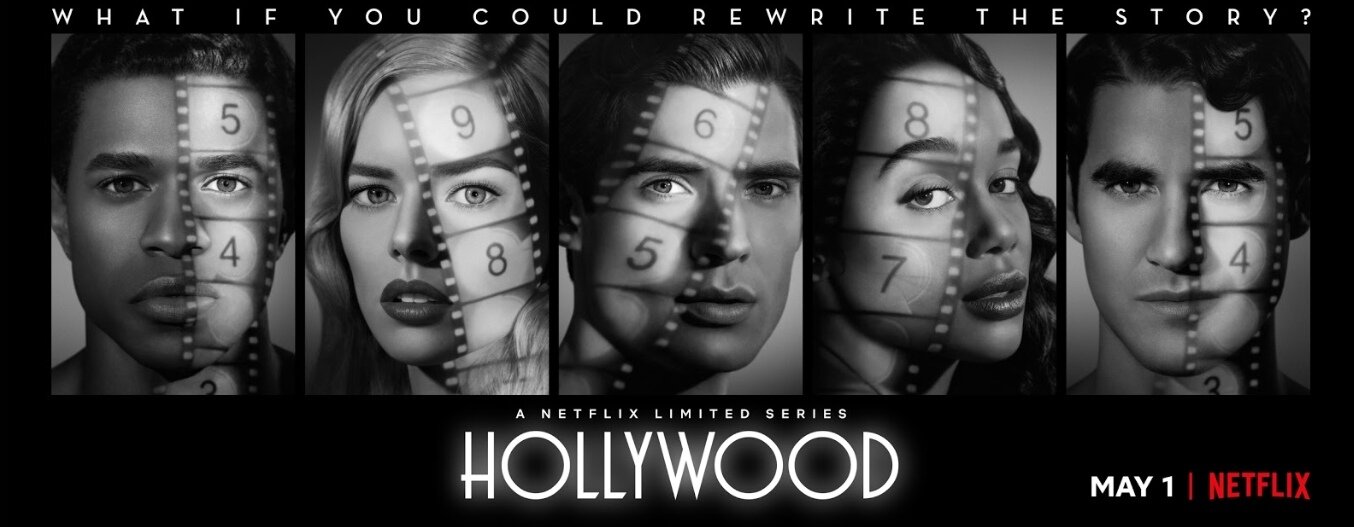If you had to ask most cinephiles the question, “Who would do better telling a story set in classic Hollywood: Glee-creator Ryan Murphy or Pulp Fiction auteur Quentin Tarantino?” then the answer would seemingly be obvious.
[Spoilers Warnings for Once Upon a Time!]
Tarantino’s film geek love letter to 1960s Hollywood came out last year and earned an 85% fresh on Rotten Tomatoes. And that seems about right. For as long as RT has been around I’ve tended to view the rankings in letter grade terms – 90s is an excellent A, 80s is a good B, 70s is an average C, and from 60s on down is either a) a terrible failure of a movie, or b) so cool and cutting edge that many critics just don’t get it.
And a B is about where the newest entry to QT’s filmography falls for me. It’s entertaining and worth a watch, but it doesn’t really resonate very much emotionally or offer any real depth about the subject matter. As he’s shown with all of his films the last 20 years, QT is more interested in style over substance, more enamored with wallowing in adolescent genre exercises than real drama or challenging creativity. QT has this great opportunity to go back to 1960s Hollywood and say something bold and interesting about the medium and the time, inspired by the provocative historical characters. But he doesn’t. It ends up being just another revenge fantasy. The Manson cultists get barbecued. Hahaha – isn’t that clever? In the QT-verse Hollywood killed the Mansonites before they could ruin the ’60s dream.
I approached the 7-episode Hollywood miniseries on Netflix with some caution as I worried that it could easily devolve into a ham-fisted ideological exercise. Creator Murphy’s premise was to explore the minority experience – including women, gays, people of color, and Jews – in post-WWII, late ’40s Hollywood. With this premise it seemed like it could be an expression in depressing victimology. After all, how could a historical drama of the time show such people succeeding when historically we know all too painfully well that they do not? That even in today’s Hollywood such individuals still struggle – to say nothing of the ideological bigotry of Hollywood – to find real roles of substance, instead of the usual stock characters and tokenized appearances.
To answer the question is to give away the series, which I will not do, because it is very much worth the watch. Murphy very creatively blends real life Hollywood figures with fictional characters, and gets his emotional hooks in early. These are likable, sympathetic characters, rather than the dull cardboard cut-out characters of QT’s post-Jackie Brown films. The series also has some unique insights into #MeToo themes, positioning them in the context of the era.
Is it really fair to compare a miniseries with a movie, though? And it’s only reasonable to point out that the two are actually set in different eras – Hollywood in the late ’40s during the post-war boom and the powerful “studio system,” and Once Upon a Time as the boom was fizzling out in the late ’60s, as a new generation of rebellious “outlaw” filmmakers were challenging the system. But the time period and the length each creative used to tell the story are besides the point.
Both men are at the height of their mediums with virtually limitless resources to do more or less any project they want. And what does QT do? He makes another hip, low-brow genre exercise that doesn’t mean much. Meanwhile, Murphy creates a collection of inter-connected, very likable characters reminiscent of Boogie Nights/Magnolia-era P.T. Anderson, each fighting to make it in Hollywood in spite of the obstacles stopping them.
Check out both the film and the miniseries – they make a fascinating compare-contrast on the strange story of Hollywood.



Comments